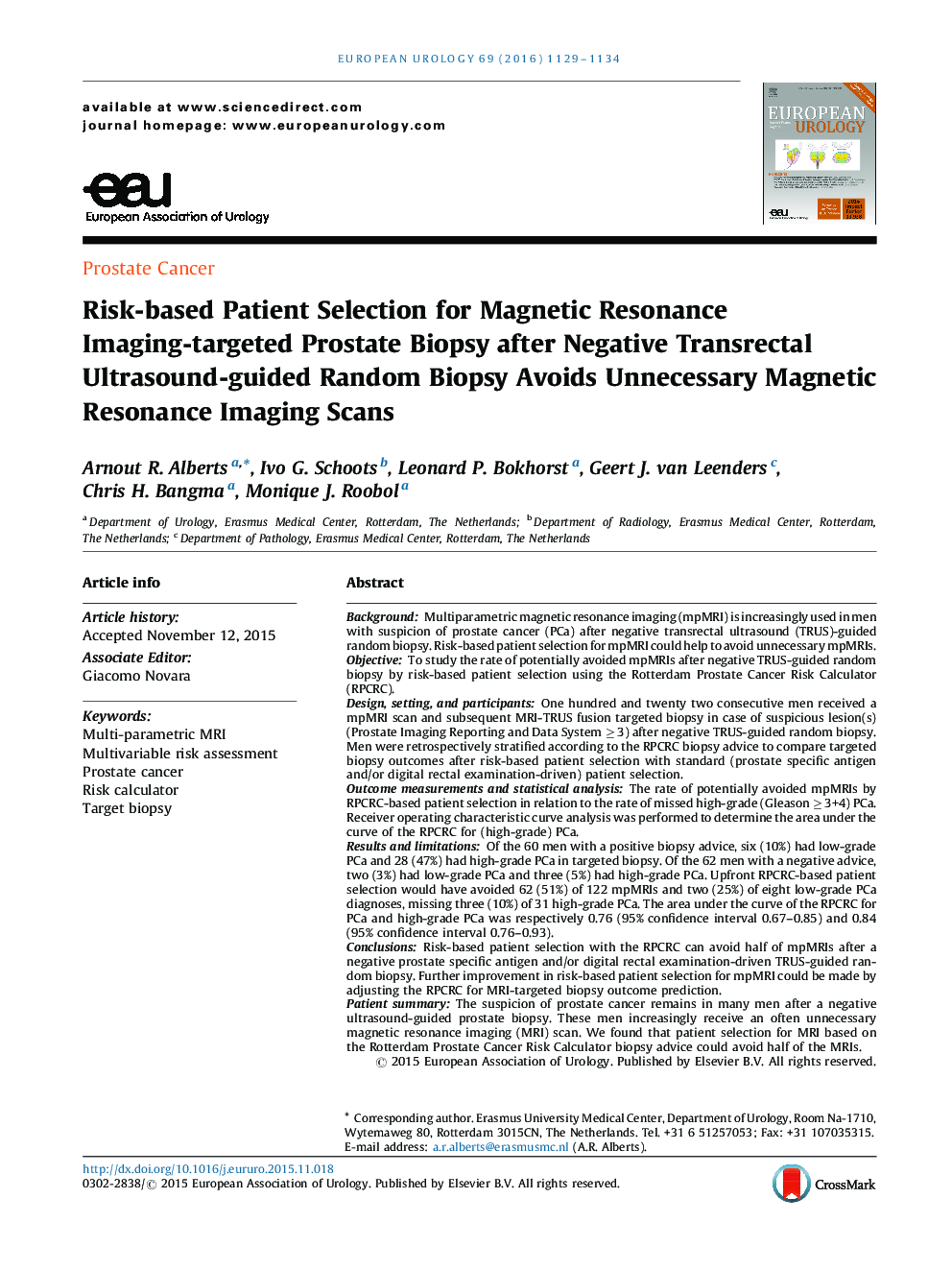| کد مقاله | کد نشریه | سال انتشار | مقاله انگلیسی | نسخه تمام متن |
|---|---|---|---|---|
| 6175091 | 1252947 | 2016 | 6 صفحه PDF | دانلود رایگان |
BackgroundMultiparametric magnetic resonance imaging (mpMRI) is increasingly used in men with suspicion of prostate cancer (PCa) after negative transrectal ultrasound (TRUS)-guided random biopsy. Risk-based patient selection for mpMRI could help to avoid unnecessary mpMRIs.ObjectiveTo study the rate of potentially avoided mpMRIs after negative TRUS-guided random biopsy by risk-based patient selection using the Rotterdam Prostate Cancer Risk Calculator (RPCRC).Design, setting, and participantsOne hundred and twenty two consecutive men received a mpMRI scan and subsequent MRI-TRUS fusion targeted biopsy in case of suspicious lesion(s) (Prostate Imaging Reporting and Data System ⥠3) after negative TRUS-guided random biopsy. Men were retrospectively stratified according to the RPCRC biopsy advice to compare targeted biopsy outcomes after risk-based patient selection with standard (prostate specific antigen and/or digital rectal examination-driven) patient selection.Outcome measurements and statistical analysisThe rate of potentially avoided mpMRIs by RPCRC-based patient selection in relation to the rate of missed high-grade (Gleason ⥠3+4) PCa. Receiver operating characteristic curve analysis was performed to determine the area under the curve of the RPCRC for (high-grade) PCa.Results and limitationsOf the 60 men with a positive biopsy advice, six (10%) had low-grade PCa and 28 (47%) had high-grade PCa in targeted biopsy. Of the 62 men with a negative advice, two (3%) had low-grade PCa and three (5%) had high-grade PCa. Upfront RPCRC-based patient selection would have avoided 62 (51%) of 122 mpMRIs and two (25%) of eight low-grade PCa diagnoses, missing three (10%) of 31 high-grade PCa. The area under the curve of the RPCRC for PCa and high-grade PCa was respectively 0.76 (95% confidence interval 0.67-0.85) and 0.84 (95% confidence interval 0.76-0.93).ConclusionsRisk-based patient selection with the RPCRC can avoid half of mpMRIs after a negative prostate specific antigen and/or digital rectal examination-driven TRUS-guided random biopsy. Further improvement in risk-based patient selection for mpMRI could be made by adjusting the RPCRC for MRI-targeted biopsy outcome prediction.Patient summaryThe suspicion of prostate cancer remains in many men after a negative ultrasound-guided prostate biopsy. These men increasingly receive an often unnecessary magnetic resonance imaging (MRI) scan. We found that patient selection for MRI based on the Rotterdam Prostate Cancer Risk Calculator biopsy advice could avoid half of the MRIs.
Journal: European Urology - Volume 69, Issue 6, June 2016, Pages 1129-1134
